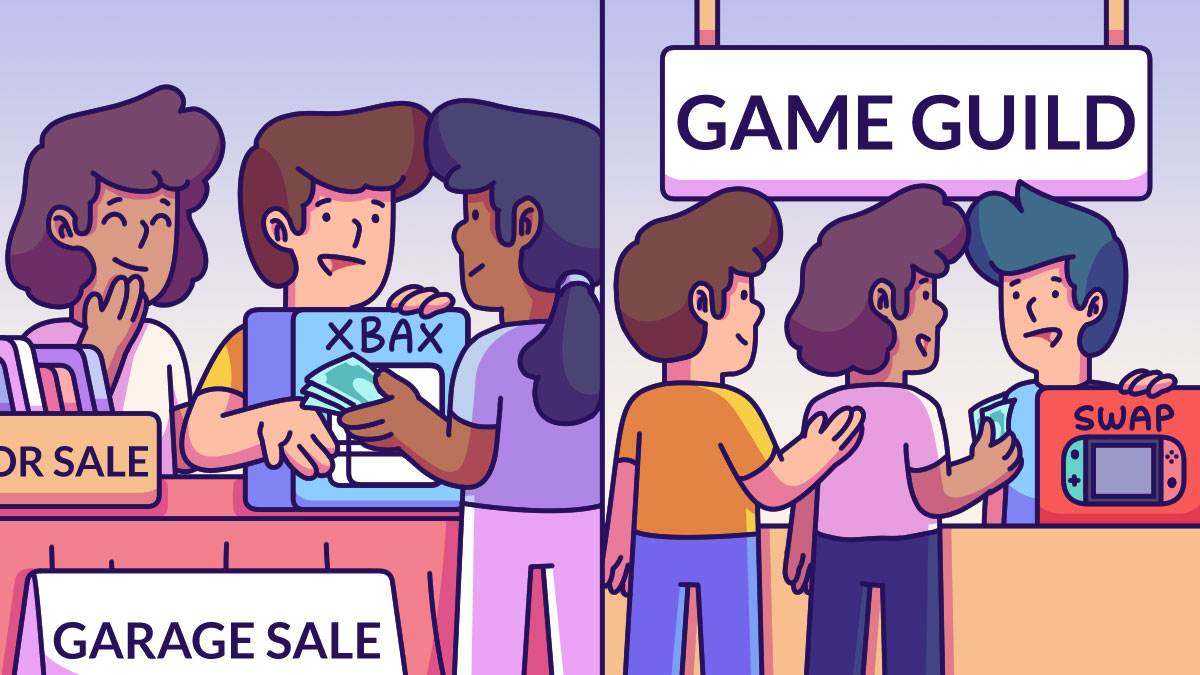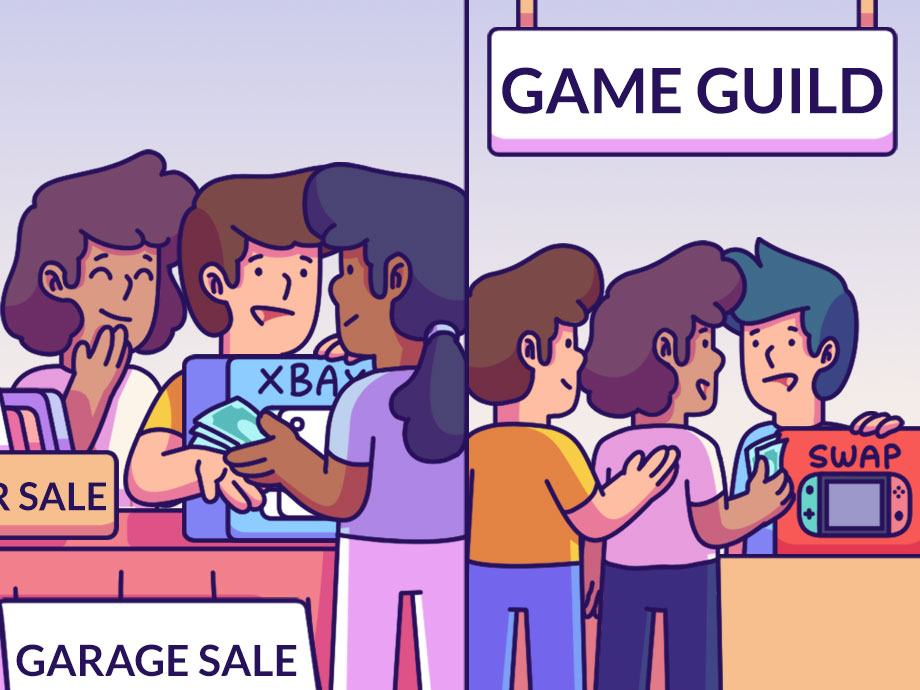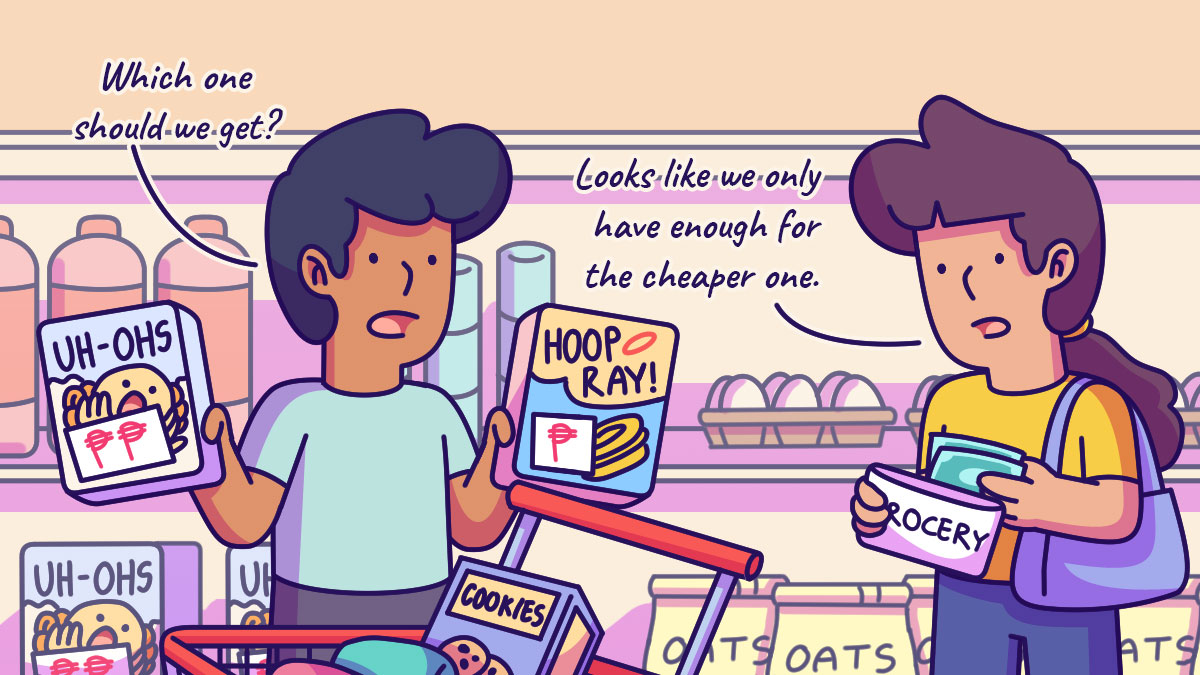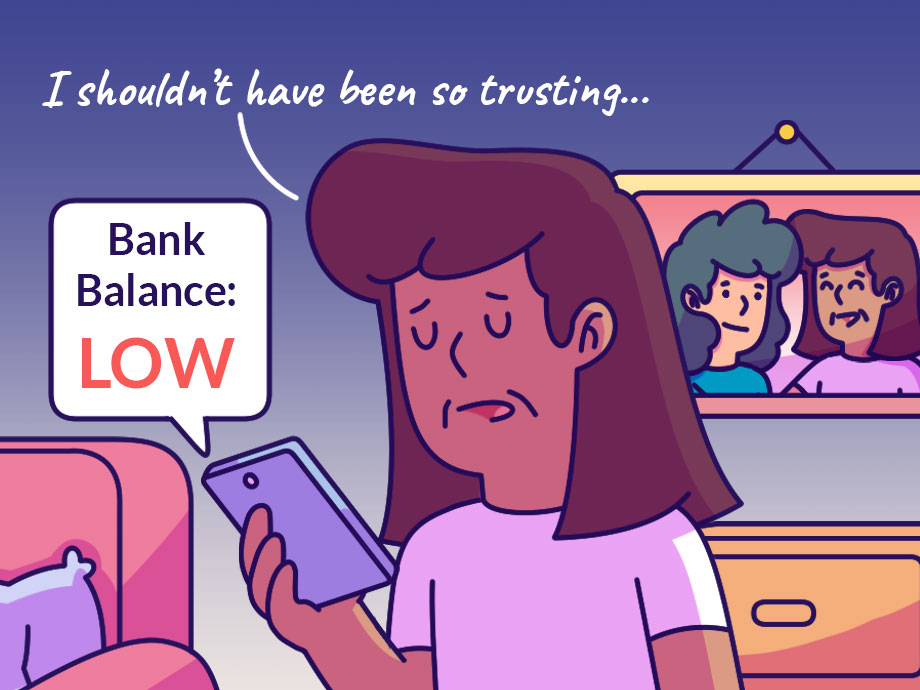Budgeting | Personal Finance | Article
I Tried Cash Stuffing and Saved ₱5,000 in a Month
by Rica | January 11, 2024 | 7 mins read
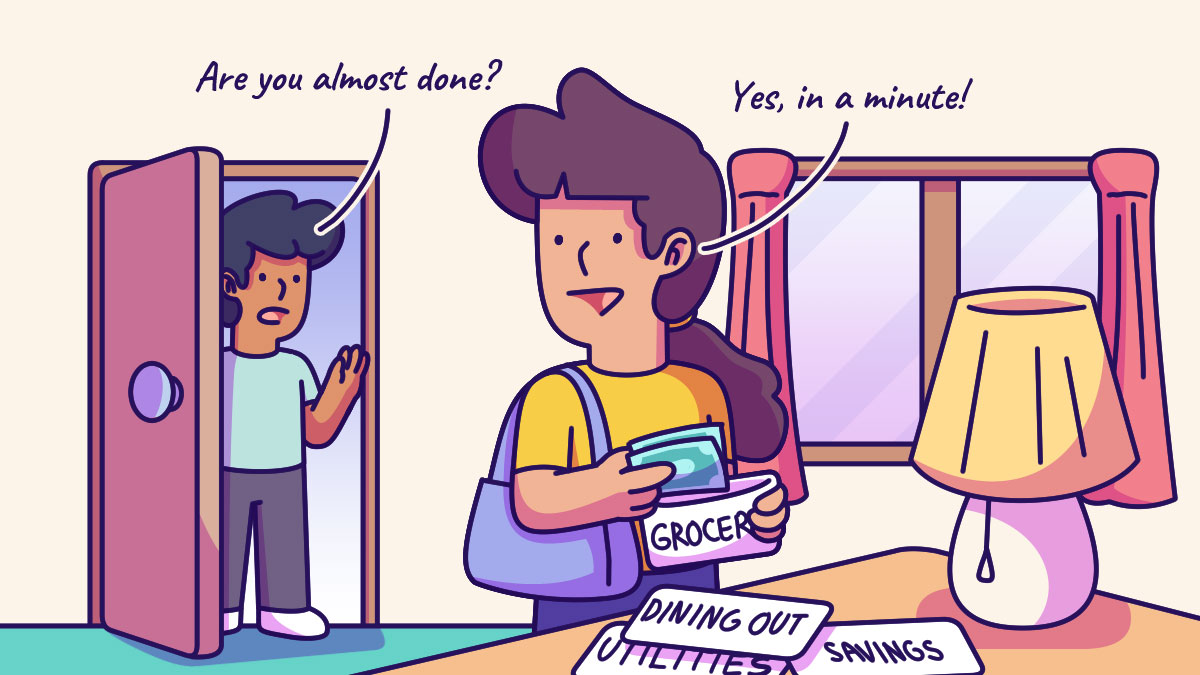
My husband once told me how his mother managed the household budget when he was growing up. She would withdraw the entire month’s budget from the bank and staple the bills according to their intended expense.
Whenever my husband needed his weekly meal allowance, his mom would hand him stapled ₱50 bills with a handwritten note: “Kuya’s School Allowance.”
My husband says this “analog” budgeting technique worked for the family and helped his middle-income parents provide a reasonably comfortable life for him and his three sisters.
It’s something that I found inspiring and wanted to try but never found the time to. And it was left forgotten, until “cash-stuffing” became viral on TikTok.
What is cash stuffing?
Cash stuffing isn’t new, it’s just a fresh name that Gen Zs have given to the envelope budgeting. This budgeting method requires you to withdraw your pay for the month (sans savings) in cold, hard cash and stuff it into envelopes properly labeled with one’s regular expenses: groceries, gasoline, utilities, fun, etc.
The rule is to strictly keep the spending on each category within each envelope’s amount. When an envelope dries up before the month’s end, one must wait until the next month, and resist transferring from other envelopes instead.
Advocates of cash stuffing believe that when exclusively using cash, people are more mindful of their spending habits, can hone their budgeting skills, and develop financial discipline since on-hand money is tangible.
When your wallet is draining cash, you see it, you feel. In contrast, the convenience of swiping your debit or credit card gives you the illusion that you have an unlimited budget. The constant awareness of how much budget you have helps you avoid impulse purchases and gives you control over your finances.
As someone who felt that I needed help with budgeting, I was excited to dive into this trend. And I was shocked by the results after I tried cash stuffing for a month.
Related
Setting the budget
Following the rules of cash stuffing, I took out ₱50,000 cash from my bank account and set it as the budget for the whole month. For context, I am a mother of two, living with my husband, my mother, and a house helper. I split the amount into seven items that represent our usual monthly expenses.
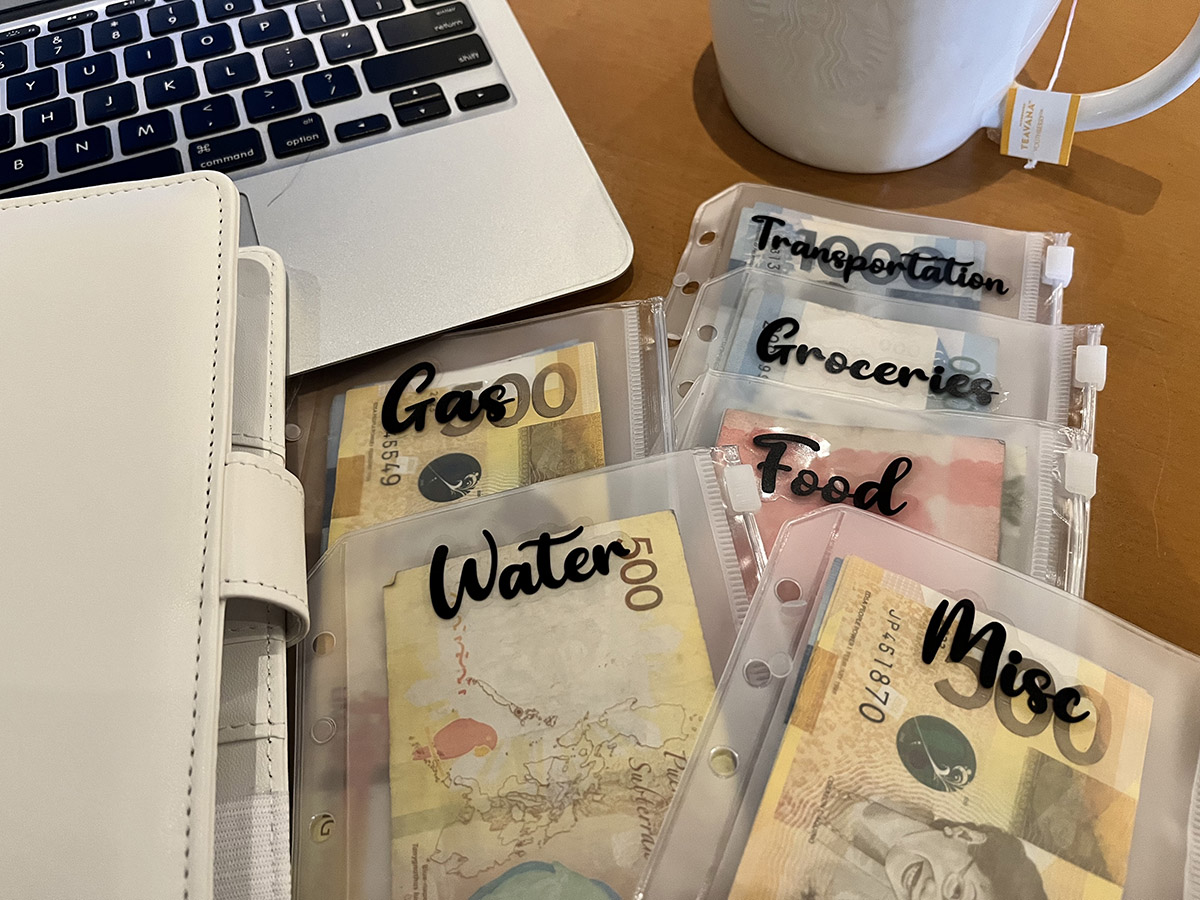
I excluded the items we usually paid online, such as rent, utilities, etc.
| Envelope Label/Item | Budget |
| Groceries | 20,000.00 |
| Food/Dining Out | 10,000.00 |
| Drinking Water | 1,000.00 |
| Gasoline/Petrol | 7,000.00 |
| Transportation | 3,500.00 |
| Tithes | 5,000.00 |
| Miscellaneous | 3,500.00 |
| TOTAL | ₱50,000.00 |
To track my expenses, I took note of my daily purchases and transferred them to a spreadsheet every two to three days.
Related
Challenges encountered with cash stuffing
Getting used to paying with cash
For someone who prefers cashless payments, shifting back to cash payment was a struggle. This is where I differ from my senior citizen mom, whom I call “the mobile ATM machine.” She prefers cash and is my savior whenever we go to a store unequipped for cashless transactions. She would joke that she was always “online”.
Worried about safety
Carrying a large amount of cash stressed the overthinker in me – the number of notes was too many for even my wallet to contain. And on the way home, I was worried that my money would be lost or stolen. Even though I had my envelopes in a small binder and it looked like a planner from the outside, I was uncomfortable whenever I pulled it out in public.
Making people behind me wait
I found myself fumbling with bills and coins more than once when it was time to pay in cafes and other establishments. It almost always took me more than a minute to pay, especially if I don’t have the exact amount. I had to endure sighs from the people in line behind me or their awkward, impatient stares.
However, I came to the realisation that time is taken even when you pay with cards and the first card provided is declined. Hence, while it was awkward, it’s not something that happens only when you pay with cash.
Inconvenience
Out of all the usual places I would usually swipe my card, paying for groceries with cash is where I struggled the most. This is because it’s where I usually bust my budget, and it’s usually not an issue because I can still swipe my card even if I spend more than I planned.
Unsurprisingly, the same thing happened when I was trying cash stuffing – I went beyond my ₱10,000 budget. Only that this time, it couldn’t simply pay for the extras. Instead, I had to remove items from my basket at the checkout counter and it wasn’t very comfortable, to say the least.
Lessons learned through this process
Despite the challenges, cash stuffing taught me several important lessons.
Sticking to a budget
As I was using physical money, seeing each envelope get thinner every time I paid for something helped me to think twice before making any purchases and to be more strict about spending within my means. It created a sense of discipline in me to do what I could and not go beyond the budget I had set.
My husband and I love eating, so we dine out frequently. But since I was a lot more conscious of my budget, we had more home-cooked meals than usual. I also declined a few dining invitations from friends to stay within my limit, as well as not deal with the hassle of paying for cash when it was time to split the bill.
During my second grocery shopping trip of the month, I knew better than to take whatever I wanted and dump it in the cart. I used a calculator to compute the prices of everything to ensure I was within my budget and wouldn’t have to embarrass myself in front of the cashier again.
Awareness of spending habits
Cash stuffing showed me how I tend to be complacent with money, swiping my card away mindlessly and not bothering to keep track of every expense. Since I had to ensure every purchase I made was recorded to account for the movement of the bills inside my envelopes, I was made to take a closer look at my spending behavior. This made me think of changes I can make to improve it.
Avoiding impulse purchases
Cash stuffing helped me avoid making any impulse purchases and I knew I only had a limited amount to spare. Hence, I would think long and hard about whether an item was worth buying before spending my very limited cash.
Saving money
Sticking with cash stuffing worked in favor of my savings as I managed to save ₱5,000, which is a big deal, as I usually don’t end the month with any savings when I swipe my cards.
| Envelope Label/Item | Budget | Actual Expenses | Balance |
| Groceries | 20,000.00 | 19,007.45 | 992.55 |
| Food/Dining Out | 10,000.00 | 7,715.00 | 2,285.00 |
| Drinking Water | 1,000.00 | 135.00 | 865.00 |
| Gasoline/Petrol | 7,000.00 | 6,000.00 | 1,000.00 |
| Transportation | 3,500.00 | 1,067.00 | 2,433.00 |
| Tithes | 5,000.00 | 4,325.00 | 675.00 |
| Miscellaneous | 3,500.00 | 6,624.50 | (3,124.50) |
| TOTAL | ₱50,000.00 | ₱44,873.95 | ₱5,126.05 |
Related
Cash stuffing helps build savings
Cash stuffing is an effective budgeting tool that can help boost your savings and make you more disciplined in handling your finances when done right. It also lessens your dependence on digital payments.
However, it can be inconvenient when digging for the right amount to pay for things. You must also be extra careful as you always carry cash.
But if you’re looking for a way to make you more mindful of your spending and start saving more, it’s a method that works, at least for me.





